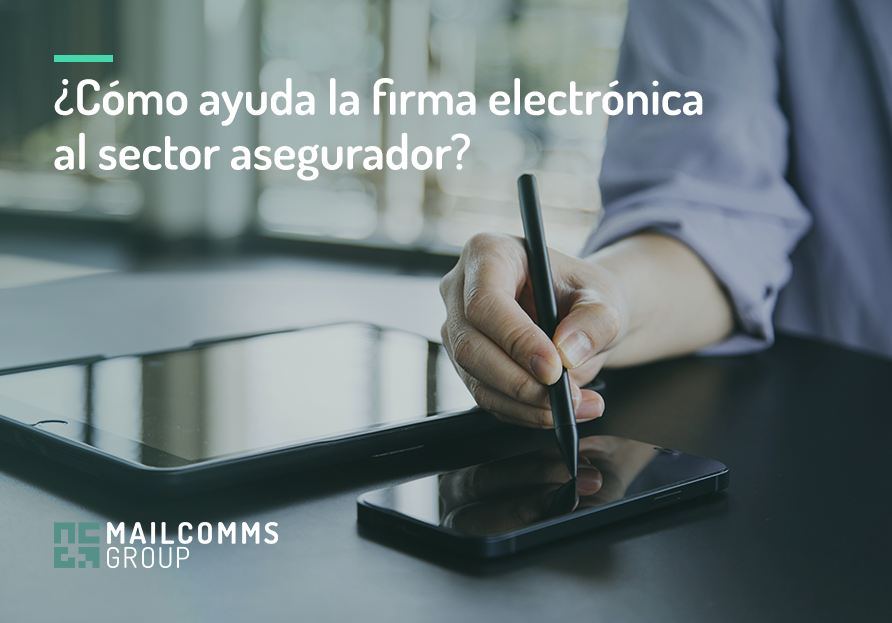
Table of Contents
- Innovation and operational efficiency with electronic signatures
- Legal framework and regulatory compliance of electronic signatures
- eIDAS 2 and electronic signatures
- CIMA as a key player in the adoption of electronic signatures
- Use cases and applications in the insurance industry
- Improved customer experience and sustainability
The insurance industry has traditionally been surrounded by a vast amount of paperwork and manual procedures that consume time, delay responses to customers (negative user experience) and generate maintenance costs. With the arrival of the digital era, companies in the sector have found the opportunity to implement a disruptive change in their day-to-day operations thanks to electronic signatures. This advance boosts operational efficiency and ensures compliance with current legal regulations, in addition to generating high levels of customer satisfaction, if implemented correctly.
Electronic signature processes are now commonplace among insurers. However, brokerages still have a way to go. Not surprisingly, according to the
Adecose 2023 barometer
only 43.7% of these entities use an electronic signature solution from a trusted third party in their relations with customers, employees, suppliers and administrations.
Innovation and operational efficiency with electronic signatures
The digital transition in the insurance sector has gained significant momentum with the adoption of electronic signatures. This tool has allowed processes that traditionally required physical presence and long waits to be carried out in a matter of minutes, without leaving home and with very high security standards.
Electronic signatures have proven to be an ideal solution to optimize processes, reduce costs and improve operational efficiency. With it, insurance companies, brokerages and other players in the sector have achieved:
- Automate processes: from applying for a new policy to handling claims, everything can be done digitally.
- Reduced waiting times: signing documents electronically eliminates delays due to sending and receiving physical documents.
- Resource savings: savings in paper, physical storage and costs associated with traditional document management.
- Security: the systems integrate high levels of security and the fact that no physical documents travel eliminates the risk of loss.
- Sustainability: the environment appreciates less paper use and a significant reduction in carbon footprint.
Legal framework and regulatory compliance of electronic signatures
Legal reliability is a critical factor in the insurance industry. The electronic signature, regulated in the European Union by the eIDAS Regulation, provides a solid legal framework that guarantees its validity and recognition in all Member States.
This regulation classifies electronic signatures as simple, advanced and qualified, and all of them are legally valid as long as they comply with the requirements set forth in the regulation. This ensures that electronically signed documents are as binding and legitimate as handwritten ones. The different types of electronic signatures are characterized by:
- Simple electronic signature: this is the most basic form of electronic signature and consists of the insertion of a piece of data in electronic form, such as an image or a scan of a handwritten signature, for example. This type of signature does not have a high level of security, since it does not allow the signer’s identity to be verified, but it is sufficient for some uses.
- Advanced electronic signature: complies with the technical and legal requirements established in the eIDAS Regulation and must identify the signer, link the signer to the signature, control the process and guarantee the integrity of the signed document.
- Qualified electronic signature: this is the most secure form of electronic signature, since it is based on the use of a qualified certificate issued by a certification authority recognized in the European Union. It offers the highest level of security and guarantees the authenticity and integrity of the signed document.
In addition, in order for an advanced or qualified electronic signature to comply with regulations, it must meet certain requirements:
- Identification of the signatory: the signature must be able to uniquely identify the signatory.
- Document integrity: the system has to guarantee that the document has not been altered after signature.
- Signatory’s consent: the signatory must consent to the electronic signature and this must be demonstrated with the corresponding evidence.
Electronic signatures are key to guaranteeing the legal reliability of communications between insurance companies and their clients.
eIDAS 2 and electronic signatures
 While eIDAS defined the types of electronic signatures and established the necessary framework for their standardization within the common market, eIDAS 2, already published, modifies the context of signature processes and updates the regulation itself.
While eIDAS defined the types of electronic signatures and established the necessary framework for their standardization within the common market, eIDAS 2, already published, modifies the context of signature processes and updates the regulation itself.
Electronic signatures benefit from the enhanced interoperability produced by eIDAS 2 between EU digital identity services. Their processes are also more secure thanks to the stricter standards that the regulation applies to trust and digital authentication services. In addition, eIDAS 2 facilitates electronic relations with public administrations: the use of electronic signatures in accordance with eIDAS 2 requirements reduces bureaucracy while simplifying and speeding up transactions with public bodies.
CIMA as a key player in the adoption of electronic signatures
70.7% of insurance brokerages were members of CIMA (Connectivity, Innovation and Services for Insurance Brokerage) in 2023, according to figures compiled by the Adecose 2023 report. This percentage has increased by 6 points with respect to 2022.
In absolute numbers, 130 insurance companies have joined CIMA, which find in this development an opportunity to maintain efficient, simple and effective communications between their systems.
At the end of 2023, TIREA (Information and Network Technologies for Insurance Companies) approved MailComms Group as an electronic signature provider, which has allowed us to integrate our CertySign tool into CIMA. This translates into a series of benefits in terms of legal assurance, confidentiality, traceability and custody. Also those obtained from our recognition as a qualified provider of trusted electronic services. Companies that choose our option within CIMA will also have access to another series of advantages and features, described in this blog post.
Inmaculada César, from TIREA, highlighted the relevance of CIMA for companies in the insurance sector in a video pill. You can see it below.
Use cases and applications in the insurance industry
Article 3 of Law 50/1980 on Insurance Contracts (LCS) establishes that insurance policies must be signed. If the insurer does not have the general conditions signed by the insured, the company will not be able to refer to them in the case of needing them in its defense to oppose the coverage of a claim, since it will not be able to prove that the client knew about them. This also applies, for the same reasons, to limiting clauses in insurance contracts, as we explained in this article.
explained in this article
.
Thus, the electronic signature has multiple applications in the insurance sector. Among other things, it can be used for:
- Policy contracting: as mentioned above, required by the LCS. The electronic signature allows customers to sign their insurance contract from any device with an internet connection.
- Claims management: streamlines the submission of claims, providing and accepting documentation and confirming compliance with the outcome of the process.
- Policy renewals and modifications: facilitates contractual updates without the need for a face-to-face meeting.
- Security and agility in PR. HH: the relationship between companies and employees is streamlined thanks to the use of electronic signatures. Contracting is faster and more secure, as well as the sending of all types of communications. Claims are smaller and, in the event of litigation, the evidence kept during the signing process simplifies litigation.
- Supplier management: supplier relations become more efficient. Product contracting or acquisitions are faster and agreements are closed remotely, with security between the parties.
- Signing of the SEPA mandate for the insured to authorize the direct debit of bills.
Improved customer experience and sustainability
The implementation of electronic signatures also has a direct positive impact on customer satisfaction. Today’s users are looking for fast, affordable and efficient solutions. Delivering a frictionless, digital user experience is essential to remain competitive in the marketplace.
In addition, electronic signatures contribute to environmental sustainability by reducing the need for paper and the constant sending of documentation, which translates into a reduction of the company’s carbon footprint.
> Are you interested in this content? If so, we invite you to read: Strategies to improve the traceability of legal documents in insurance companies.
